FBAUL-IST GAMING 2018

SPICE QUEST
On the 27th of February 2018 I, Débora Machado, a student from Faculdade de Belas Artes from Lisbon University, met my colleagues from Instituto Superior Técnico, Aram Serobyan and Mário Santos, at TagusPark, at their game lab session. We didn’t make a group right away; but when we did, a couple days later, and they told me their idea for the game they wanted to make, I fell in love right away with the project.
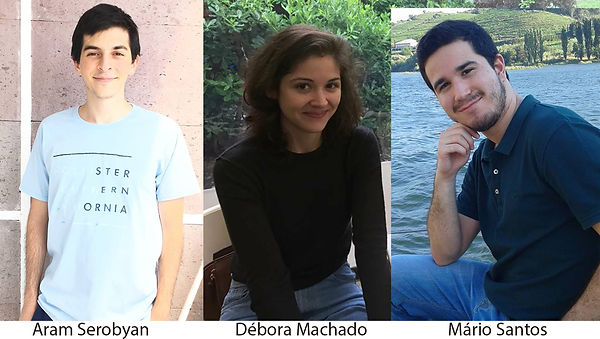
Our project, which has the working name Spice Quest, is an historic game about Portuguese discoveries and colonialism, where the player, wearing the shoes of a XV century portuguese merchant, has to explore the world, islands, on a quest for spices. Our main influences were map based strategy board games such as Caravelas, Century: Spice Road, and Civilization.
Spice Quest will be a one-tap mobile game, and its gameplay, you could say, is an adventure kind of game with a management and diplomatic simulation twist. After all, besides discovering new lands and collecting as much spices as possible, the player will also have to deal with kings and traders and manage his resources.
The target public would be adult strategy players, even though everyone - from young to less young - could enjoy it as it can be played in a more casual manner just as well. Furthermore, the player will be able to learn a little bit about Portuguese and world history while enjoying the game: everybody knows that learning is fun, especially when it’s subtle.
While Aram and Mário are busy with the consolidation of the concept and the programming part of the game, I’m dealing with the visual part - the aesthetics of the game. Together with Aram and Mário, we decided that Spice Quest would have mainly Isometric graphics, and that’s what I’m working on at the moment.
Much of it can, and probably will, change along the way, but what we do know for now is that the game will have a main level, where the player will control a Caravela (a faster and smaller sailing ship, great for short distances, not so great for great lengths as it is more frail) or a Nau (a more robust and bigger sailing ship, great for greater distances), sailing them to whichever island he wants to explore. When the player sails to an island and berths there, the player will have to deal with a random event - if he’s lucky he will find a desert island, a plantation, where he can just collect spices; however if he’s unlucky, he’ll have to deal with a king or a trader, under the danger of losing his freedom or even his life (Game Over). This means that the player will have to respond brightly to the event, because he will have to get out safely, but he will also have to have enough resources left to make the next trip. There will be 8 islands in total: (probably) Brazil; China; Guinè-Bissau; Goa; Japan; Macau; Mozambique; and Timor.
Are you ready to join our great portuguese sailors and conquer, once again, the maritime trade routes?
March 30th 2018
Since March 30th things have been moving forward and smoothly. My colleagues, Aram and Mário, have been working on prototipes and surveying people who play them, so we can understand how to better suit the player; as well as doing a workshop on game and concept development. This has been pretty usefull, we finally have firmed up our concept and our game, and we now have finished the game development document.
As for me, I have been trying to figure out what would be the best graphics for this game. As it is a game about portuguese commercial routes in the 1500’s, I want it to have a more traditional look. Even though everything is made digitally, I’m trying to get some ‘oil painting’ feel to it.
In the past few days I have been working on promotional images: the title design and a cover. I also already have the «Points and Gold» bar, as well as the «Inventory» bar and the eight «Resources Icons». To test if the bars and icons were readable and aestethic in the a phone’s 9/16 screen, I downloaded an image to my own - it was quite readable, but some of the icons were off and obviously unfinished.
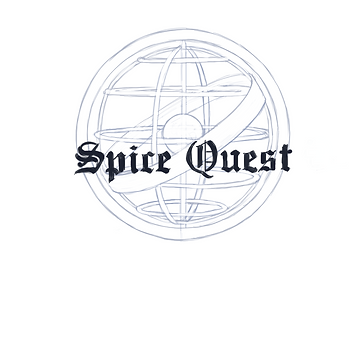
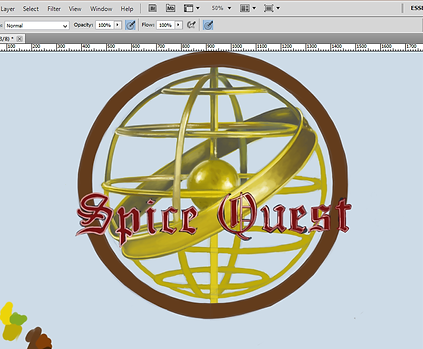
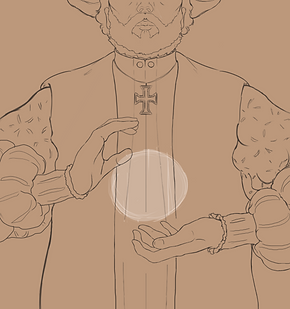
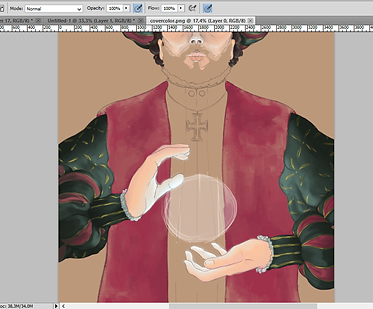
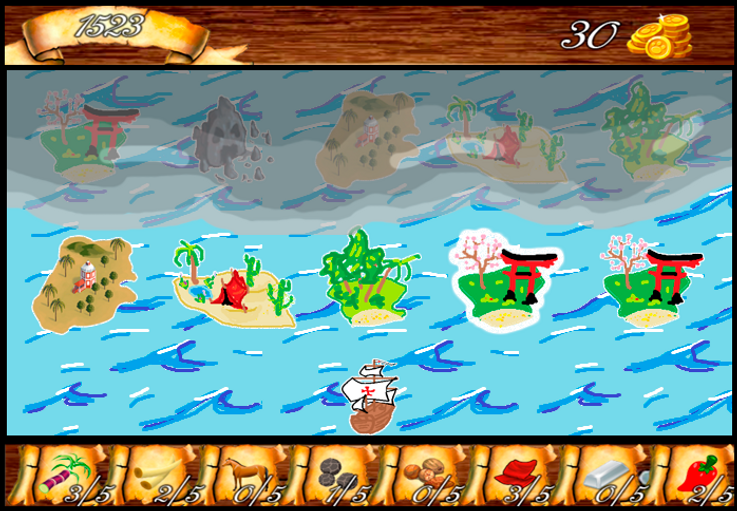
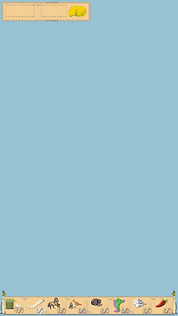
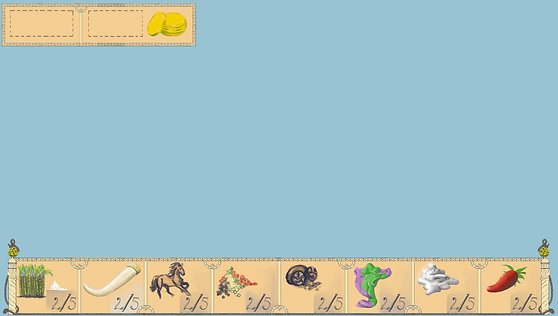
April 15th 2018
In the last two weeks, our team started working towards putting the game together. Aram and Mário have been focused on Unity, and they have been making great progress on constructing the game. Meanwhile, I just keep drawing and painting.
Communication have been the key so far. My colleagues have been great, always telling me what do they like and what do they think wouldn’t work that well on my work, as well as giving me some new ideas. It’s been really precious having their feedback, and also being included in the whole process, as they make sure I’m always aware of what they’re doing.
Since April 15th I finished all the ‘resources icons’, the background, and the ‘ports’ (‘islands’). I keep checking the layout from time to time, in my phone, to see if the work in progress keeps being readable. I’m quite glad with how things are coming together, in spite of me not having that much of a broad gaming visual culture.
April 30th 2018
The deadline is closing in. We have about two weeks until MOJO, and we’re doing the best we can to have a good prototype of the Spice Quest game to show the public then.
I actually have been playing the prototype we have right now, and let me tell you, I really love the game, as it’s exactly my type of game. Unfortunately, we still have a lot of work to do until May 29th, so I can’t get too distracted playing it, but it certainly granted us a nice boost to keep going.
Since March 30th, the date of the first post, a lot of things have changed, as I knew it would.
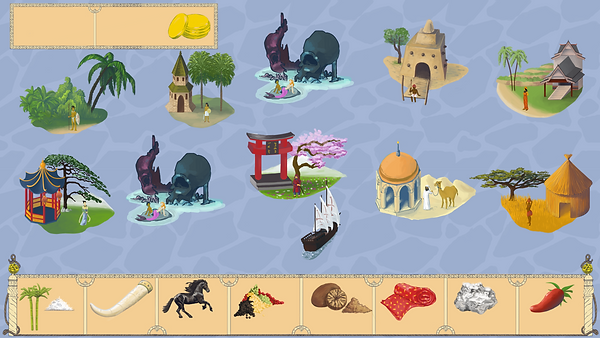
Ports from top left to top right: Brazil; Calicut; Special Port; Guinea; Malaca.
Ports from bottom left to right: China; Special Port; China; Arabia; Mozambique.
As you can see in this rough sketch of what the layout of the game will look like, the major change since then is the destination ports. By the time of the first post, we were talking about Brazil - sugar cane, China - silk, Guinea - chilly pepper, Japan - silver, Mozambique - ivory, which are still up; however Goa, Timor and Macau have been replaced by India (Calicut) - pepper, Indonesia (Malascca) - nutmeg and Arabia (Ottoman Empire) - horses. We also added a Special Port, which works like a normal port, but where the event that occurs will be either much better than it would be in a normal port, or way much worse: there is a 50% chance of going either way.
At the start of each game the player will be handed 3 randomly generated goals to complete: one of them is to survive at least 30 turns; the other two are to collect 0/20 of one of the resources, and 0/4 history cards from one of the ports. These goals, if completed, will grant prestige points to the player.
The ports will be randomly generated as well after each turn. The player can see 10 ports all the time, but some of those ports will be repeated sometimes; which means that although there are 9 ports, the player won’t see exactly those 9 ports all the time. This means that the player will have to strategically chose the best port to berth each turn. Also worth noting that each travel costs the player gold.
The events occur after the player berths in a port. These events, already implemented, can be: Pirates (the player lose some random resources); King (the king wants some of the player’s resources - the player can choose which - for free); Trader (the player can sell, buy, or trade resources); and Collection of resources.
In the occurrence of a King event the player can ‘Run’ from the king without giving him what he is asking for (free resources), however if the player runs from the king of that port enough times, the king will make the player game over the next time that port generates the King event. On another hand, if the player makes the king happy enough times, the next time that port generates the King event the king will grant the player an history card of that port. This is the only way the player can collect these cards.
Besides the event system implemented in the prototype, we also have a tutorial; but we do need to work on it. The people we’ve been showing the game to have been telling us that the tutorial isn’t that much clear.
While my colleagues have been working on bettering the game play, and getting rid of the bugs; I’ve been working on the boat sprites. After these sprites are completed I will finally start working on the illustration for the events, which are about 19 images.
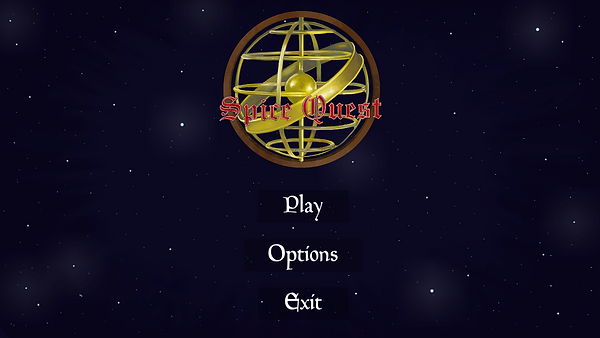
Prototype screencap: Menu as it looks like right now
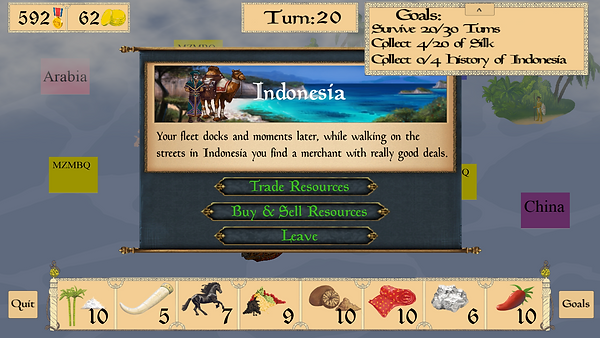
Prototype screencap: Trader event depicted as it looks like right now
May 15th 2018
May 29th, the day of the MOJO, finally came. It was yesterday and I had a great time. During the event I played other games being developed by the other students; I swear, some of them I wish I could buy, just so I could play more at home. I was amazed by how much my compeers were able to accomplish at such short time frame. I also talked to a lot of people, which, I admit, was something I was dreading about MOJO. I don’t feel that comfortable talking to people and I rather keep to myself; however, that was quite easy after all. People there were nice and I learned a lot. Some came to me telling me how I could get better and giving me tips, in case I want to build a career in the game development field; and others talked to me about their own games and how they had made it.
I really appreciated this whole experience. It was one of the most (if not the most) fruitful experiences I had in my academical path. Not only did I learn a lot, and gained much welcomed practical experience, but I also had to leave my comfort zone, which I rarely bring myself to do. The thing is, if you want to succeed at almost anything, you do have to leave your comfort zone and you do have to talk to a lot of people. People with whom you are working with; people who know more than you, or people who simply know different things than you do; and even people who are your public. This partnership between FBAUL and IST is a great way for students to start doing that, it helps them learn how to work as a team and it helps them learn how to be more comfortable and confident for when they start their professional careers.
It’s worth noting that I had a lot of luck with the group I was paired with - I don’t mean to say the other groups wouldn’t be great as well, but sometimes chemistry takes a big role in this kind of affairs. Aram and Mário were great guys, and I think we worked well together. They came up with an awesome game that I love (I figure it would maybe be harder to work on the game if I didn’t), and they did a great job bringing it to life, in my opinion. They were also very nice to me. They were very patient.
Back to MOJO, things went better than I expected; it was the first time the public was able to play our game, and I think, in general, people actually enjoyed it. Some people even came by several times, just to play it again! That to me was amazing, I was really happy about it. Most of them were also eager to share how they thought the game could be better, which is very useful - constructive criticism from the public is always helpful and very important when you are trying to make games.
Oh, but the best part, for me, was seeing people enjoying my art. It was incredible. Some people even laughed when they saw the kings expressions changing. I never thought it would be this cool seeing people interacting with my drawings. I mean, an artist can spend a lot of time and effort on his/her drawing or illustration, but when that work is shown to the general public, it is going to be met, usually, with a simple «Yeah, it looks cool. You seem to have a knack for that.» and that’s all. Then they just go on with their lives, not even thinking about it, not even noticing the effort of the little things and details, that really make that illustration beautiful. This is very much understandable, I hope I don’t sound too conceited. I know not everyone has to love looking at art as much as I do - everyone has their own interests after all. However, it is a quite nice change watching people really enjoying and having fun with the drawings and art that you made. It is an amazing feeling and I think maybe this is one the main reasons that makes me feel compelled, at the moment, pursuing this line of work.
Talking about work - I rambled enough as it is, but let me tell you about the last few days previous to MOJO. They were very intense. I spent 5 days working, my hand was hurting, my eyes turned red at certain point from the time I spent in front of my computer screen, and, even though I don’t like leaving the house all that much anyway, I did miss feeling the sunlight during those days. I had to do it, though, I didn’t want to let my team down. They were counting on me and I still had a lot to do. I still had to do all the kings and their expressions, all the events backgrounds, some more icons, and the sea background; not forgetting the poster. I had started doing the poster back in March, but I hadn’t finish it yet, I was having trouble making it readable. At the end, I really loved how the poster turned out. I think it looks really cool now, but I have to admit, my boyfriend helped me a lot in that regard. I was stuck when he gave me some vital tips and ideas; so I really need to give him credit for that.
Aram and Mário liked the poster a lot too, they even used it for the game menu, which I think works really well.
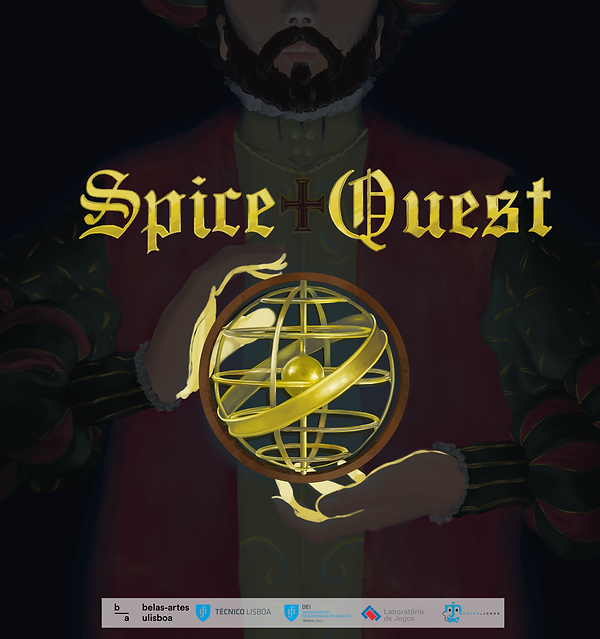
Well, thankfully I was able to do everything on time. I even got some time left to redo some things that looked less than acceptable.
There were some other things, still, I wish I had done better. Like the waves background, and some icons, and some of the events backgrounds, the ports… But that belongs to the whole experience of learning: you don’t know how to do those things, so you just do them the best you can; after you have them done, you know how you could have made them better. It’s a shame I didn’t had the time to redo everything; nevertheless, I liked how the aesthetics of the game turned out overall. Sure, comparing to other games I saw at MOJO, which looked really cool and finished, I know I could have done better; yet I feel like I did a good enough job.
My colleagues, as I said before, did a great job. They were able to finish the game on time, without any major bugs, and they still had the time to add some soundtrack too. By sunday, being MOJO on a thursday, they were just updating the final arts. The only problem is that the game turned out to be too heavy. It was thought as a mobile game, but with a size of 45 MB, that won’t work, which is too bad. I was eager to put it on my phone, but maybe this is for the best, I wouldn’t be able to get much work done that way, to tell the truth.
To finish this chapter of my academic journey I’d like to say, on the off chance someone is reading this boring text in a few months from now, wondering if they should try or not enrolling in this adventure - please do. Put your insecurities aside, your fears, or even your shyness, and do it. I seriously doubt that you’ll regret it.
Icons:

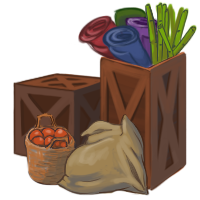
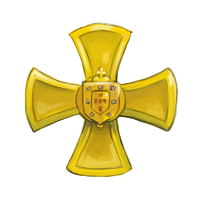
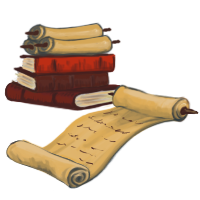
Kings:
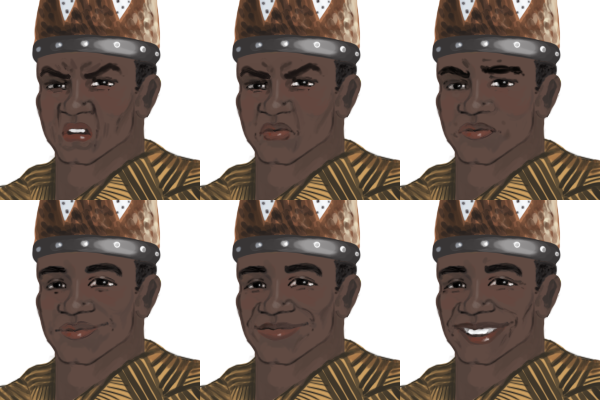
Mozambique King
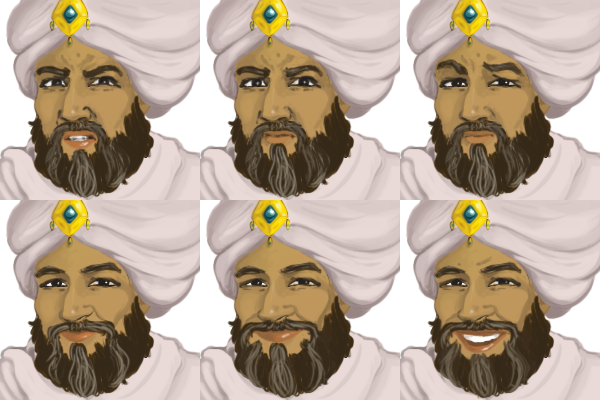
Arabia King
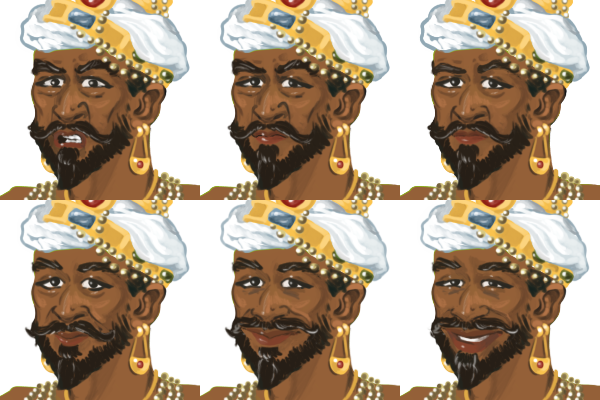
India King
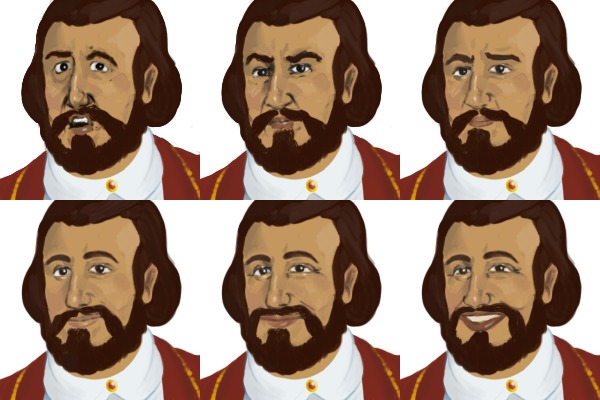
Brazil King
Background Events:

China Event

Guinea Event

Japan Event

Indonesia Events